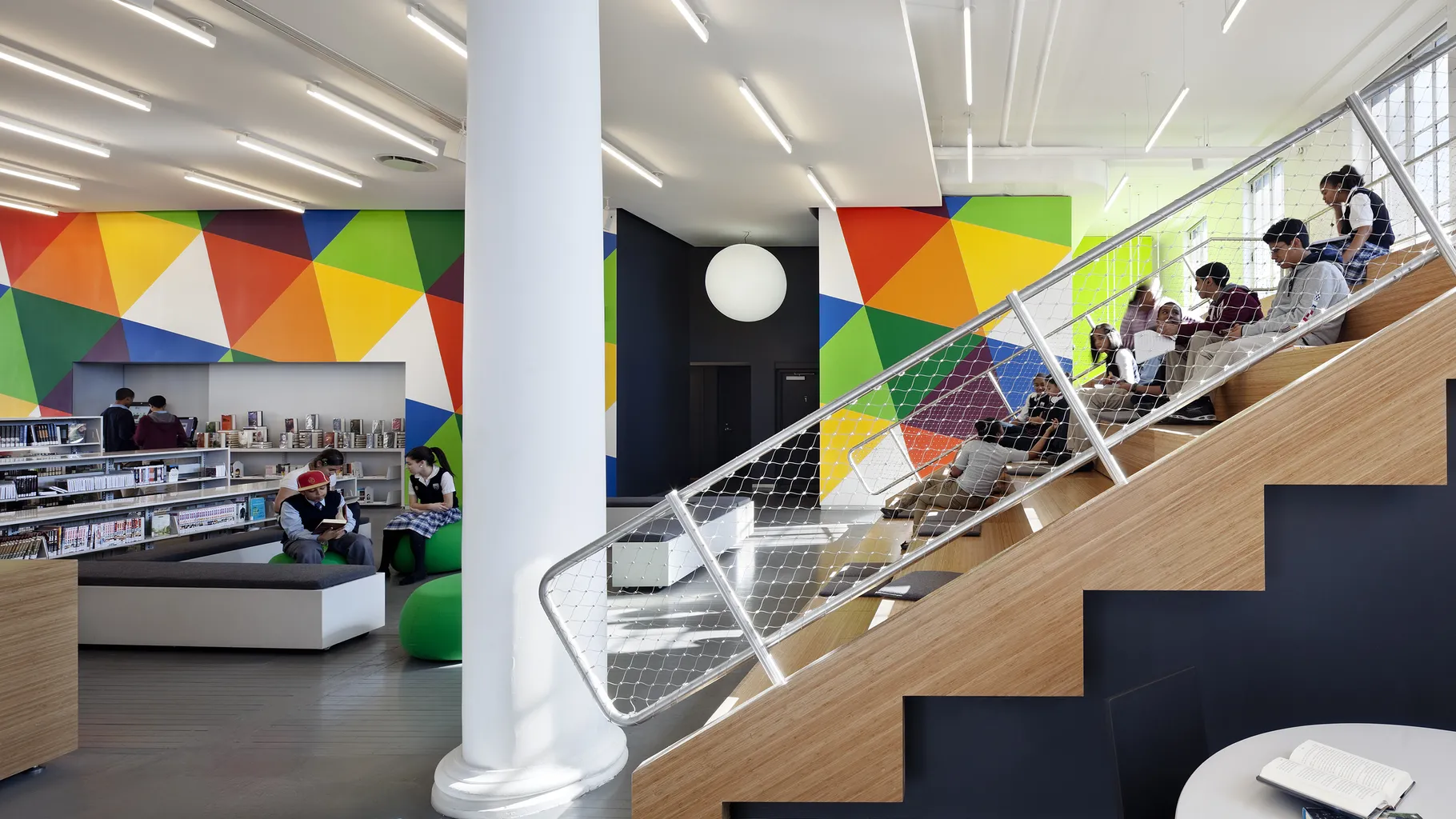The discussion of Library 2.0 and the increasing incorporation of online resources has continually led me to think about the preservation and evolution of the library as a physical space. In particular, I’ve enjoyed and been intrigued by the readings that discuss the library as a space for younger patrons, especially teens. As younger generations continue to use technology, libraries that integrate these tools will continue to offer valuable resources. But what about making the physical space equally valuable?
Stephens & Casey (2020) emphasize the importance of providing “interesting and safe things for kids to do” including examples of libraries offering gaming activities for teens and O’Brien (2019) highlights the importance of and efforts to provide a free public space for patrons that offers community and services. These resources always bring me back to the discussions I’ve seen about third places. Lin et al. (2015) state that:
Third places possess eight characteristics: a neutral ground, acting as a leveller, having conversation as the main activity, being accessible and accommodating, having regular participants, having a low profile, encouraging a playful mood, as well as being seen as a home away from home.
While libraries offer many of these characteristics, I don’t think it’s often reflected in people’s perceptions of libraries. As someone who grew up perceiving libraries as a safe haven in many aspects, I don’t think I often viewed it as a welcoming place to stay in. I think the perception many people have of libraries, whether public, school, or academic, is often intimidating or restrictive. I feel like I have seen the general opinion of younger people become more and more vocally positive over the years, though it’s been mostly in relation to digital services provided like Libby. I’m increasingly interested in the efforts libraries are taking to shift current perceptions, especially in younger generations.
In Bolan et al’s (2007) discussion of “Teen 2.0”, they highlight teen’s interest in a welcoming and comfortable physical space “where they can stay awhile and just hang out, read, do homework, listen to music, or work on the computer” and gaming as a literacy activity that allows teens to “self-regulate”. Nicholson (2013) details how libraries have served as a recreational space, shared resource, and place of solace and community activity throughout the years and how libraries have used games to introduce patrons to other library services and retain adolescent patrons who become too old to be interested in story time and summer reading programs. I’ve had the chance to see firsthand the impact of gaming programming in libraries. We recently started running a Dungeons & Dragons club for ages 10-18, with most of the attendees being 4th graders. I’ve been lucky enough to watch these kids fuel their own literacy, build community, learn to self-regulate, and see our library cement itself as a third space for these young patrons. At the same time, not only have we seen very few teens attend, especially for more than one session, but I’ve also had other staff mention that older teens would likely be a poor fit based on our current much younger demographic and end up leaving/being dissuaded. While part of the proposed solution is to have interested teens participate in a volunteer capacity, I feel this does little to offer them the same experience the younger patrons are receiving. And this is an issue I feel occurs in many of the programs offered where teens are invited but not truly incorporated into the library. On top of this, my coworkers and I have recently noted how dismal the teen spaces/collections feel in comparison to both the adult and children’s areas at each of our branches. As information becomes more accessible online and libraries escape their identity as a silent space (Mathews, 2010), I think it’s interesting and important to explore what the physical space should provide.

Moran, M. (2018). Hamilton grange teen center [Photograph]. Curbed. https://archive.curbed.com/2018/5/24/17389648/library-architecture-teens-public-space
The main thing these resources and my own experiences have reinforced is how important it is to talk to the community you want to reach. Listening to patrons and seeking out their input is something I see many libraries struggle with despite the best intentions. Bolan (2007) emphasizes how important it is to actively involve teens in the creation and evolution of library spaces for them. As someone who wants to provide a similar if not better library environment for young patrons to the one that inspired my love of libraries, a critical part of that is working with them and letting them lead the way. In general, I think it’s important for libraries and library staff to make sure their actions reflect their words when it comes to appreciating the value of welcoming younger patrons.
References
Bolan, K., Canada, M., & Cullin, R. (2007). Web, Library, and teen services 2.0. Young Adult Library Services, 5(2), 40-.
Lin, H., Pang, N., & Luyt, B. (2015). Is the library a third place for young people? Journal of Librarianship and Information Science, 47(2), 145–155. https://doi.org/10.1177/0961000614532303
Mathews, B. (2010, June 21). Unquiet Library has high-schoolers geeked. American Libraries Magazine. https://americanlibrariesmagazine.org/2010/06/21/unquiet-library-has-high-schoolers-geeked/
Nicholson, S. (2013). Playing in the past: A history of games, toys, and puzzles in north american libraries. The Library Quarterly (Chicago), 83(4), 341–361. https://doi.org/10.1086/671913
O’Brien, C. (2019, June 24). How San Francisco’s public libraries are embracing their changing role. Shareable. https://www.shareable.net/how-san-francisco-public-libraries-are-embracing-their-changing-role/
Stephens, M., & Casey, M. (2020, June 9). Embracing service to teens. Tame the Web. https://tametheweb.com/2008/05/15/embracing-service-to-teens/

Leave a Reply